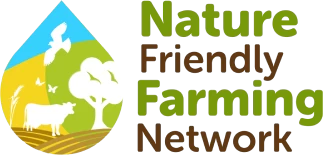In our response, we said Defra should maintain the current levels of protection for hedgerows as an absolute minimum, as hedgerows are crucial natural assets which require well-designed regulations. The Government also needs to ensure hedgerows are not exposed to damaging maintenance practices, that current seasons when hedges cannot be cut are kept in place and that there is a strong programme of monitoring and enforcement so hedgerows can deliver for both farm businesses and nature.
Hedgerows can bring a wealth of benefits for both farms and wider society, but the existing regulations will not be enough on their own unless there are penalties for damaging practices which will act as a deterrent. In addition, the creation of new hedgerows needs to be prioritised alongside protecting those already in existence in order for the UK to meet its ambitious environmental goals.
Defra should consider extending the current two-metre buffer zone around existing hedgerows to four metres to prevent ploughing right up to the edges of fields. There shouldn’t be an exemption for small fields up to two hectares in size or for hedgerows under five years old.
The current no-cutting period, lasting from 1 March to 31 August, should be kept as red-listed endangered birds such as linnets, turtle doves, and yellowhammers have all been observed using hedgerows to breed until the end of August. Farms under five hectares in size should not be exempt from these regulations as that would leave hedgerows on around 15% of agricultural land in England inadequately protected.
In addition, we’re calling on Defra to put in place a robust regulatory framework to ensure exemptions to the rules are only granted on a case-by-case basis and that non-compliance is dealt with via a mixture of stop notices, compliance notices, restoration notices and fines.
Defra also needs to create a comprehensive definition of what constitutes a hedge, suggesting its current plan to amend existing regulations could end up with fewer hedgerows being protected than is the case now under cross-compliance regulations.
Farmers have been contributing to the consultation and speaking about how important hedgerows are on their land
Arable farmer Patrick Barker, who farms 550 hectares of land in North Suffolk and who featured in the spin-off episode of Sir David Attenborough’s recent series Wild Isles, said: “We’ve got 48 kilometres of hedgerows over a 500-hectare farm, which is a lot. For me, hedges are so important. We want as much variety as we possibly can: tall hedges, short hedges, fat wide hedges, unruly ones. We know wildlife responds well to the different hedgerows."


